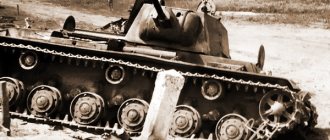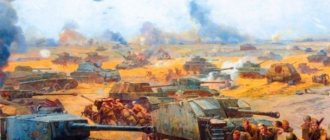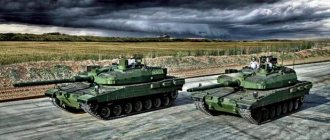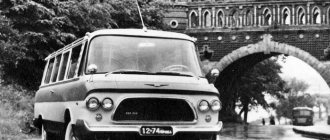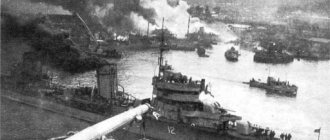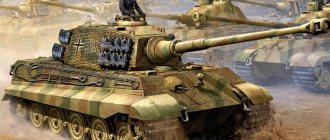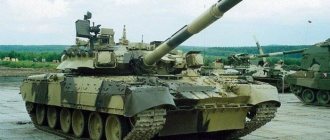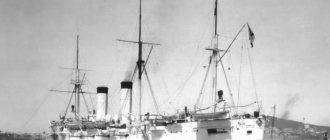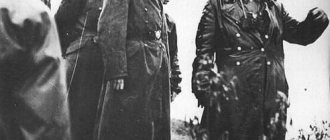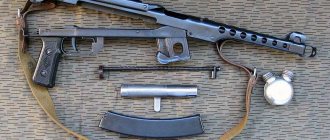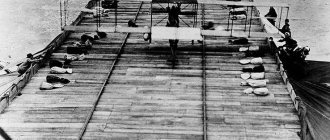Legs from Christie: how Kharkov became a tank forge
The Donbass was not alone in rapidly developing - the largest power plants, hundreds of plants and factories began to be built on the territory of Soviet Ukraine in record time. One of the basic enterprises was the locomotive plant in Kharkov (founded back in 1897), which was destined to produce the legendary T-34 tank.
In February 1931, the first BT came out of its gates - a high-speed tank assembled on the basis of an American prototype and put into service with the Red Army. Thus began the long history of the T series of tanks, which continues to this day.
To be completely honest, we started not with a combat vehicle, but with a tractor: we reproduced the German Hanomag WD Z-50 under license, which became the “Kommunar”.
© Public Domain
Tractor Kommunar. Kharkov Locomotive Plant
The experience inspired the plant workers so much that in December 1927, a specialized tank design group was formed at KhPZ, led by an inexperienced 23-year-old designer Ivan Aleksenko , who had just returned from military service.
The USSR was stifled by a personnel shortage; there was a catastrophic shortage of engineers, so important tasks had to be entrusted to people without experience, and sometimes without education. For example, the future creator of the T-34, T-44, T-54, T-64 Alexander Morozov was the same age as his boss, but did not have a higher education.
As a result, enthusiasts, who were also faced with material problems, had difficulty completing the task of thoroughly modernizing the T-12 tank to the T-24 model, missing all deadlines and producing twenty-five instead of 150 vehicles. Therefore, on June 1, 1931, an order came from Moscow to stop production.
© tanki-tut.ru
Tank T-24
By this time, the leadership of the Department of Motorization and Mechanization of the Red Army (UMM) had developed a confident alternative.
Having spent several years on inhuman attempts to produce weapons designed on their own, they came to the conclusion that it was more rational to buy licensing rights for the production of weapons and equipment abroad.
“Kharkov has not changed its pace.” How the American giant of Stalinist industrialization was created
©
RIA Novosti, / Go to photobank
In 1930, the heads of the procurement commission, the head of the UMM Innokenty Khalepsky and the tank designer Semyon Ginzburg, traveled to England, France, Italy, Germany, and Czechoslovakia. They were only interested in British vehicles: wedges, as well as 6- and 12-ton tanks. But then Soviet officials came to the USA, to engineer John Walter Christie - and the fate of the project was decided.
Unlike other designers, Christie proposed not just a tank, but a whole concept of fast tank raids, during which a mass of elusive vehicles could destroy and paralyze the enemy’s rear. Christie claimed that he had created a vehicle that could perform the functions of both a tank and an armored personnel carrier, moving with or without tracks.
The creation reached a speed of over 70 km/h, which was fantastic for armored vehicles of that time. The tank acquired such properties thanks to the spark plug suspension invented by its creator, which was named after the designer and made it possible to reduce the height of the hull, increasing the vehicle's maneuverability.
© antikclub.ru
John Walter Christie (second from right) on a Christie-designed tank
Such universality (later it turned out that it was imaginary) could not help but intrigue the Soviet commission. And the decisive argument in favor of the purchase was the information that negotiations with the designer were being conducted by the Poles, who were ready to pick up the prototype. Poland was then the main potential enemy for the USSR. From the Polish-Soviet border to Kyiv there was nothing at all - 250 kilometers. "M. 1940" on wheels could cover this distance in less than four hours.
Khalepsky reported to his superiors:
Tank Marathon by Mikhail Koshkin
©
Public domain
“In terms of its speed, the Christie tank surpasses all tanks in the world... the Poles are going to build it... If the Poles can organize the production of the Christie tank before us, then we may find ourselves at a very unfavorable ratio in terms of the tactical use of tank units.”
On April 28, 1930, an agreement was concluded between the US Wheel Track Layer Corporation and the Amtorg Trading Corporation, through which the USSR traded with the United States.
It provided for the delivery in September 1930 of “... two military tanks with a total cost of 60,000 US dollars... spare parts for the purchased tanks in the amount of 4,000 dollars, as well as the transfer of the right to manufacture, sell and use tanks within the borders of the USSR for a period of ten years. The tanks must be delivered no later than four months from the date of signing the contract...”
For the right to produce tanks, the USSR agreed to pay Christie 100 thousand dollars. The designer terminated the contract already concluded with the Poles, returned the advance payment to them and began preparing for delivery.
This is where another story began, because the supplier deceived the client.
The tanks left the USA only on December 24, 1930, but without the turrets, which were not shipped. Therefore, it all ended in a quarrel: the USSR did not pay an additional 25 thousand, and Christie did not go to set up production, as provided for in the contract.
And the Kharkov guys got involved again, although they were mortally offended by their superiors for curtailing the medium tank project.
A day in history. December 19: T-34 - the birth of a legend
©
Public domain
Now they had to “finish” the high-speed tank; the American creation was assigned the BT index, introducing it into the tank building program, which had not previously considered such a direction. In February 1931, the “nedocristi” were adopted and decided to be produced in Kharkov at the KhPZ.
Aleksenko, who by that time headed the tank design bureau, submitted his resignation, believing that it was unpatriotic to impose the production of foreign equipment on the plant. His point of view was shared by his superiors.
Deputy head of the UMM Gustav Bokis reported to Khalepsky:
“...The director of the plant, Bondarenko, in order to discredit the high-speed vehicle, openly called it “sabotage”... It took a lot of effort, pressure and resolutions, right up to the government, to force KhPZ to build the BT tank and, in the production process, to eliminate certain shortcomings that were in the drawings and designs BT tank."
But Moscow did not want to hear anything, demanding the production of 100 BT tanks in the second half of the year. But the task turned out to be difficult. The car turned out to be crude and unfinished.
The copies released in the USA constantly broke down. There were no hatches for engine repairs; any work had to be carried out by dismantling half the tank.
© militaryarms.ru
Soviet BT tank
But the main thing was that the turret needed to be redesigned, and the developers of the tank gun failed. The domestically developed PS-2 37-mm cannon did not satisfy the military. It ended with a barrel from a German 37-mm anti-tank gun, produced under license from the Rheinmetall Corporation, being placed on the PS-2 carriage.
In addition, rental manufacturers could not master the production of cemented armor, and the first vehicles were assembled from ordinary structural steel.
The USSR had not yet established production of its own engines of sufficient power; it had to be purchased from American aviation engines, many of which were used. They were characterized by low reliability and tended to spontaneously ignite.
All of this was compounded by a lack of experience among designers, organizational chaos and the low production culture of KhPZ workers.
A day in history. January 23: 75 years ago the most famous Soviet tank was put into service
©
RIA Novosti, Nikolay Maksimov / Go to photobank
For a long time, a strange thing happened to the BT-2 tanks that left the experimental workshop for the testing ground - they could not travel further than the factory pigsty. The ill-fated pigsty became the subject of ridicule and discussion, first among tank production workers, then among the plant management, and soon it began to be remembered at UMM meetings in Moscow. When the tanks were finally able to get beyond this invisible “pig” barrier, everyone breathed a sigh of relief.
But the government order was disrupted.
By November 1, 1931, KhPZ produced only three tanks. Moreover, the engine of one of the cars caught fire on the way to the parade in Moscow. Only two BT-2s arrived, and many believed that they did not stop during the passage of Red Square only by luck.
As a result, on December 6, 1931, the former general designer of Leningrad, Afanasy Firsov, . He was appointed to the position of project manager for organizing the production of the BT tank, although he had to sit on a bunk, sentenced to 5 years in the camps as a member of a “sabotage group.” The tank project made adjustments to his fate and Firsov took up the matter with gusto.
In 1932, KhPZ produced 396 BT tanks, and in 1933 - another 224. And since 1933, KhPZ switched to the production of the independently designed BT-5 tank. A year later, the BT-7 appeared, and both performed well both in the parade and in the war.
© Public domain
Pre-war tanks produced by plant No. 183. From left to right: A-8 (BT-7M), A-20, T-34 mod. 1940 with L-11 cannon, T-34 mod. 1941 with F-34 cannon
A kind of culmination of success was the T-34 medium tank, developed by the design bureau of the tank department of the former Kharkov Locomotive, and now specialized plant No. 183 under the leadership of Mikhail Ilyich Koshkin .
The completely domestic development retained a reminder of the history that became a turning point in the armor business: the “Christie pendant”, to which an entire tank forge was attached.
Notes
- Khlystov F. L.
Tanks and mechanical traction in artillery (General information about tanks. Main tank transmission systems) - Spencer Tucker. [books.google.com/books?id=N481TmqiSiUC&pg=PA62&dq=m1928+christie Tanks: an illustrated history of their impact]. ABC-CLIO, Nov 30, 2004. P. 62.
- Alexander Mikhailovich Taube. [books.google.com/books?id=FJQ0AAAAIAAJ&q=tank+christie&dq=tank+christie Military English-Russian dictionary]. State Publishing House of Foreign and National Dictionaries, 1942. P. 112.
Carier start
In some Soviet publications, John Walter was often given the German name Walter; he turned out to be a resident of Germany and even gave his high-speed tank to the USSR, not wanting it to be used by the imperialists. In fact, everything was different... Christie was born on May 6, 1865 in the town of Riverage, New Jersey, and died in 1944 in Falls Church, Virginia, at the age of 79. He received his education at evening school, then worked for and at the same time studied at Cooper Union, a New York school for workers. After some time, he managed to get a position as a consulting engineer in one of the American shipping companies, and it was here that his first design success came to him: Christie created a rotary machine for processing parts of naval gun turrets. In 1904, John built several front-wheel drive racing cars, and in 1912, using prize money, he founded a company to produce such cars and also wheeled tractors, but had no success in the market.
Excerpt characterizing Tank Christie
“Dear friend of my soul,” he wrote. “Nothing but honor could keep me from returning to the village.” But now, before the opening of the campaign, I would consider myself dishonest not only before all my comrades, but also before myself, if I preferred my happiness to my duty and love for the fatherland. But this is the last parting. Believe that immediately after the war, if I am alive and everyone loves you, I will drop everything and fly to you to press you forever to my fiery chest.” Indeed, only the opening of the campaign delayed Rostov and prevented him from coming - as he promised - and marrying Sonya. Otradnensky autumn with hunting and winter with Christmastide and Sonya's love opened to him the prospect of quiet noble joys and tranquility, which he had not known before and which now beckoned him to themselves. “A nice wife, children, a good pack of hounds, dashing ten to twelve packs of greyhounds, a household, neighbors, election service! - he thought. But now there was a campaign, and it was necessary to remain in the regiment. And since this was necessary, Nikolai Rostov, by his nature, was satisfied with the life that he led in the regiment, and managed to make this life pleasant for himself. Arriving from vacation, joyfully greeted by his comrades, Nikolai was sent for repairs and brought excellent horses from Little Russia, which delighted him and earned him praise from his superiors. In his absence, he was promoted to captain, and when the regiment was put under martial law with an increased complement, he again received his former squadron. The campaign began, the regiment was moved to Poland, double pay was given, new officers, new people, horses arrived; and, most importantly, that excitedly cheerful mood that accompanies the outbreak of war spread; and Rostov, aware of his advantageous position in the regiment, completely devoted himself to the pleasures and interests of military service, although he knew that sooner or later he would have to leave them. The troops retreated from Vilna for various complex state, political and tactical reasons. Each step of retreat was accompanied by a complex interplay of interests, conclusions and passions in the main headquarters. For the hussars of the Pavlograd regiment, this entire retreat campaign, in the best part of summer, with sufficient food, was the simplest and most fun thing. They could become despondent, worry and intrigue in the main apartment, but in the deep army they did not ask themselves where and why they were going. If they regretted retreating, it was only because they had to leave a comfortable apartment, a pretty lady. If it occurred to someone that things were bad, then, as a good military man should, the one to whom it occurred to him tried to be cheerful and not think about the general course of affairs, but think about his immediate business. At first they cheerfully stood near Vilna, making acquaintances with Polish landowners and waiting and serving inspections of the sovereign and other senior commanders. Then the order came to retreat to the Sventsyans and destroy the provisions that could not be taken away. Sventsyany was remembered by the hussars only because it was a drunken camp, as the whole army called the Sventsyany camp, and because in Sventsyany there were many complaints against the troops because, taking advantage of the order to take away provisions, they also took horses among the provisions, and carriages and carpets from the Polish gentlemen. Rostov remembered Sventsyany because on the first day of entering this place he replaced the sergeant and could not cope with all the men of the squadron who had drunk too much, who, without his knowledge, took away five barrels of old beer. From Sventsyan they retreated further and further to Drissa, and again retreated from Drissa, already approaching the Russian borders.
